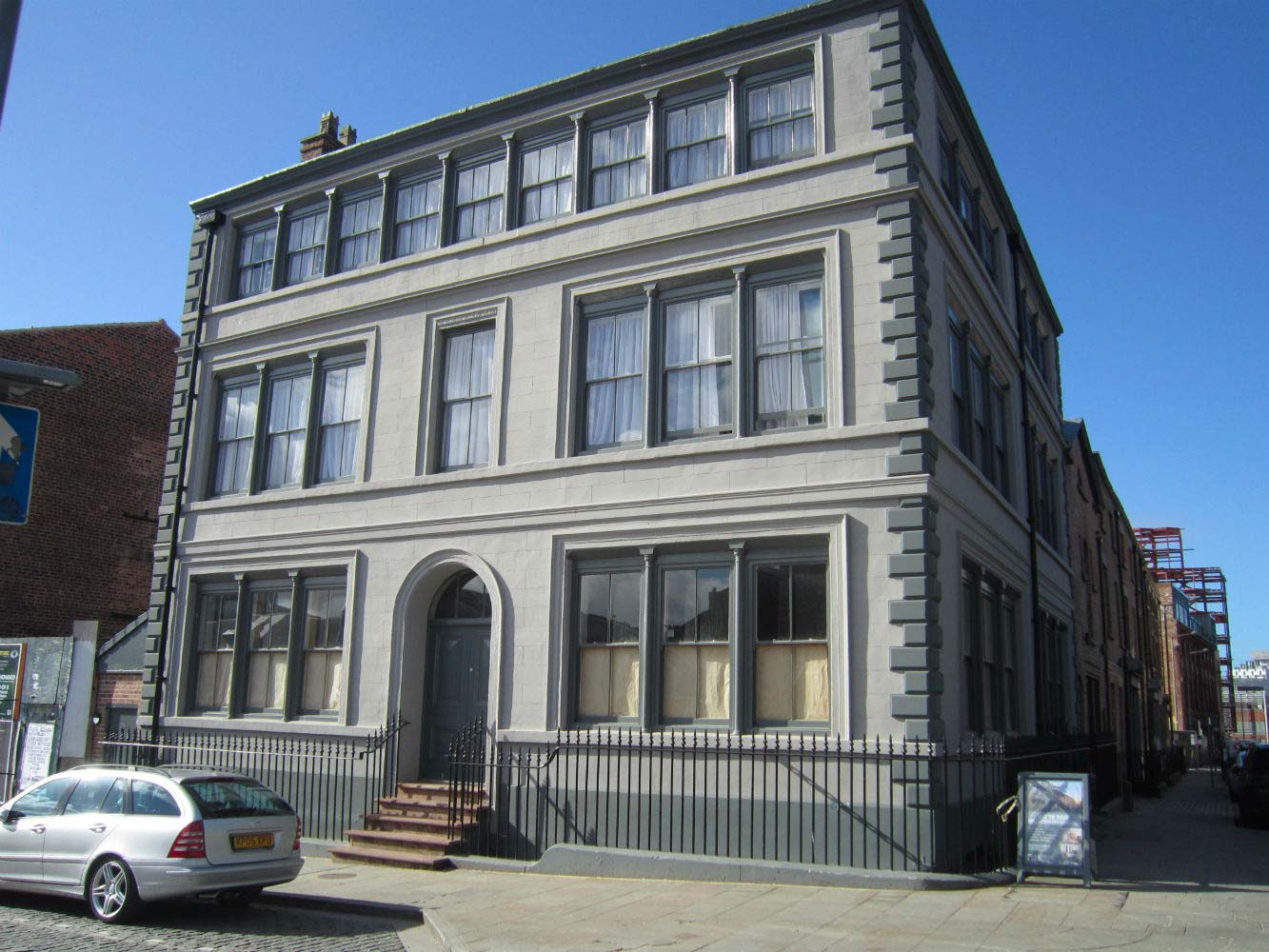Liverpoole is one of the wonders of Britain…I am told that it still visibly increases both in wealth, people, business and buildings: What it may grow to in time, I know not.
Daniel Defoe, mid 1720s
Area 6: The Merchants’ Quarter – Lower Duke Street
Lower Duke Street is home to the Merchants’ Quarter. Representing the first ‘boom’ in the city’s mercantile economy, it is a patchwork of merchants’ houses and warehouses built to serve the Old Dock that opened in 1715.
Duke Street was at the forefront, with much of the area as seen today in place by 1785. This area represents a crucial stage in the development of the historic port city.
It developed a cosmopolitan feel as home to sea captains, merchants, traders and artisans.
The area adjacent to and north of Duke Street including Parr Street, Seel Street, Fleet Street, Wood Street, Bold Street and Slater Street was renamed the RopeWalks after the long straight yards and streets where rope was made during the 18th century and which still influence the urban grain.
It includes the former Watchmakers on Seel Street and Slater Street. Occupied from 1855-1876 as watchmaker’s premises by Richard Shearer and Thomas Russell, the watch and clockmaking industry reached its peak in Liverpool in the mid C19.
This area has been undergoing significant transformation to its historic buildings and urban fabric through financial investment on the part of English Heritage (Historic England), Liverpool City Council and the Heritage Lottery Fund.
The Bluecoat (1718) Grade I listed
The Bluecoat Chambers was originally built by Brian Blundell, a sea captain and philanthropist, as a charity school in 1717 in the Queen Anne style. It is the oldest surviving building in Liverpool city centre.
Blundell’s ship ‘The Mulberry’ was the first ship to enter Liverpool’s and the world’s first enclosed commercial wet dock, designed by Thomas Steers and opened in 1715.
The main entrance is round headed with a broken pediment above containing a cartouche of the arms of Liverpool. To the rear a landscaped garden provides a quiet environment, totally enclosed from the city. The building reopened in 2008 following an extensive restoration and is now a creative hub and arts centre.
The Royal Institution (1799) Grade II listed
Parr Street in Liverpool is named after Thomas Parr (1769-1847), a slave trader and banker. The Grade II listed house at 24 Colquitt Street was built c. 1799 for him and his warehouse behind is the building at 57 Parr Street.
The complex of buildings originally built for Thomas Parr is one of the earliest remaining residence/warehouse hybrids that were so characteristic of Duke Street following the construction of the Old Dock in 1715. It became the Royal Institution when it fell out of residential use in 1817, and it was incorporated by Royal Charter in 1822. It is now a private members club.
The Institution, established by Liverpool merchants in 1814, and inaugurated by William Roscoe in November 1817, was founded for the pursuit of literature, science and the arts. Many of the men who established it were linked to slavery, either as traders or owners of plantations. It was a meeting point for scientists, artists, doctors, architects and many more and became the intellectual and artistic heart of the city.
In 1826, American ornithologist and painter John James Audubon visited Liverpool to raise money to publish his extraordinary book The Birds of America. He received support from Liverpool merchants and philanthropists William Roscoe and William Rathbone, who introduced him to their circle including the American consul, Mr Maury, and exhibited his drawings at the Royal Institution in 1826. A copy of this rare volume can be seen in the Liverpool Central Library.
The Old Bridewell (1861) Grade II listed
The Bridewell, or police station, dates from 1850. It is now a public house and restaurant.
Charles Dickens had great affection for Liverpool and visited on several occasions.
In 1860, it is thought Dickens was based at the Bridewell in Campbell Street for one night when he was sworn-in as a constable in the Liverpool Police Force to research for an essay in ‘The Uncommercial Traveller’. Dickens toured the area around the docks and portrayed the lively, cosmopolitan character of 19th century Liverpool in ‘Poor Mercantile Jack’.









